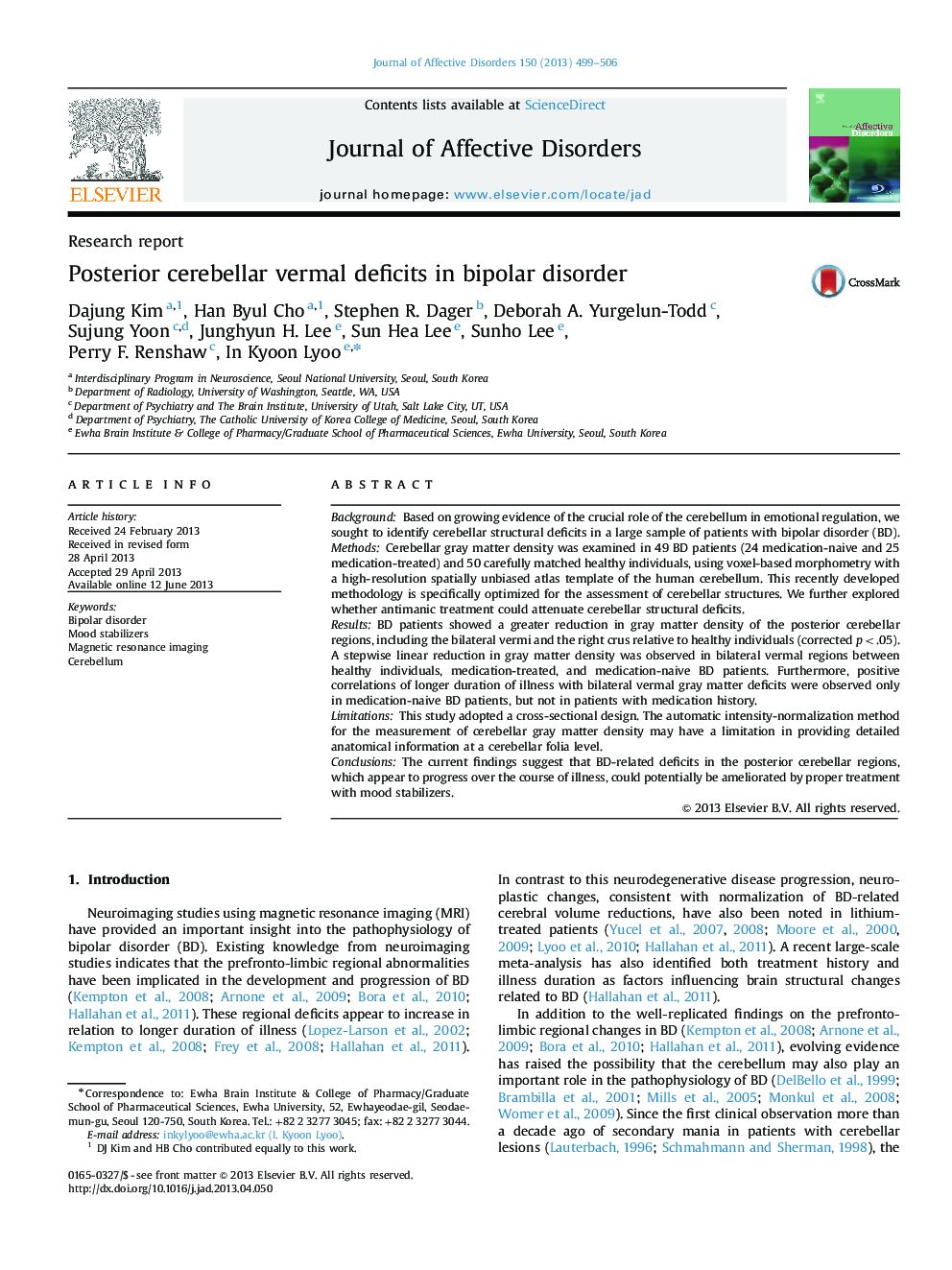| Article ID | Journal | Published Year | Pages | File Type |
|---|---|---|---|---|
| 6234302 | Journal of Affective Disorders | 2013 | 8 Pages |
BackgroundBased on growing evidence of the crucial role of the cerebellum in emotional regulation, we sought to identify cerebellar structural deficits in a large sample of patients with bipolar disorder (BD).MethodsCerebellar gray matter density was examined in 49 BD patients (24 medication-naive and 25 medication-treated) and 50 carefully matched healthy individuals, using voxel-based morphometry with a high-resolution spatially unbiased atlas template of the human cerebellum. This recently developed methodology is specifically optimized for the assessment of cerebellar structures. We further explored whether antimanic treatment could attenuate cerebellar structural deficits.ResultsBD patients showed a greater reduction in gray matter density of the posterior cerebellar regions, including the bilateral vermi and the right crus relative to healthy individuals (corrected p<.05). A stepwise linear reduction in gray matter density was observed in bilateral vermal regions between healthy individuals, medication-treated, and medication-naive BD patients. Furthermore, positive correlations of longer duration of illness with bilateral vermal gray matter deficits were observed only in medication-naive BD patients, but not in patients with medication history.LimitationsThis study adopted a cross-sectional design. The automatic intensity-normalization method for the measurement of cerebellar gray matter density may have a limitation in providing detailed anatomical information at a cerebellar folia level.ConclusionsThe current findings suggest that BD-related deficits in the posterior cerebellar regions, which appear to progress over the course of illness, could potentially be ameliorated by proper treatment with mood stabilizers.
